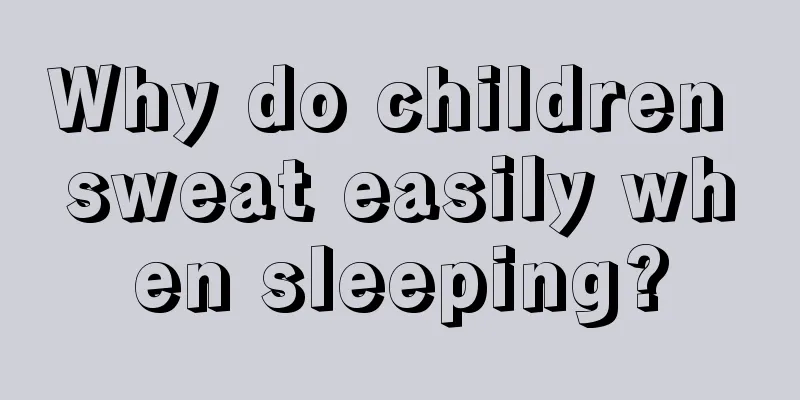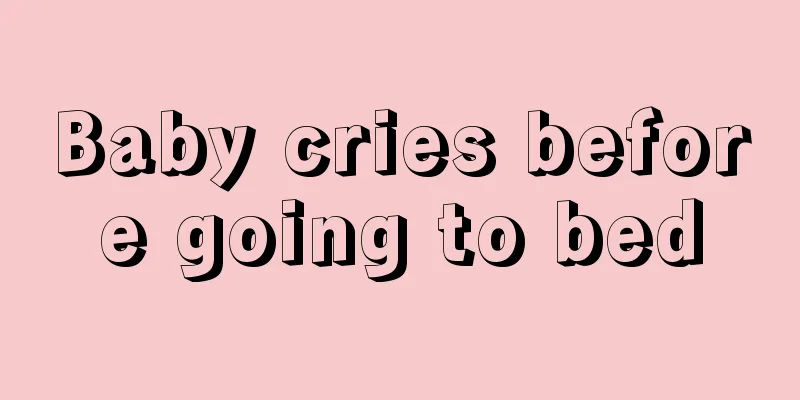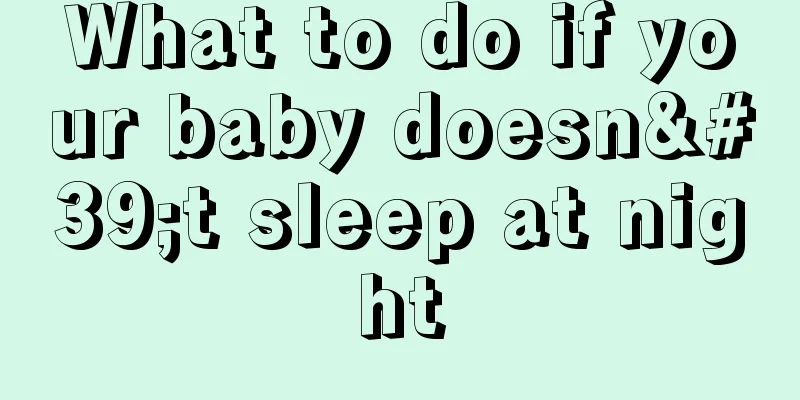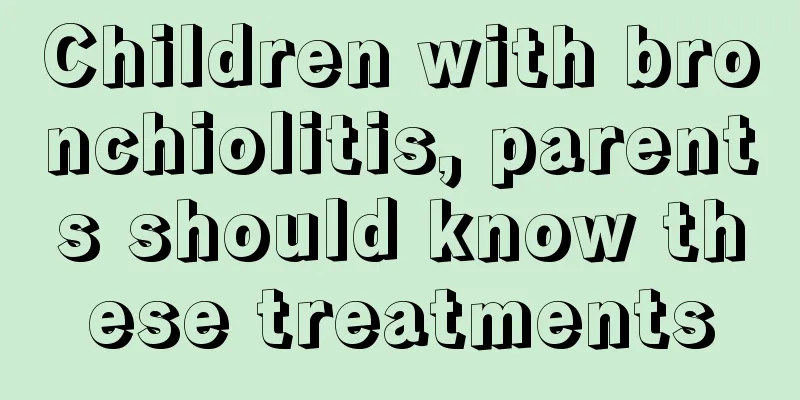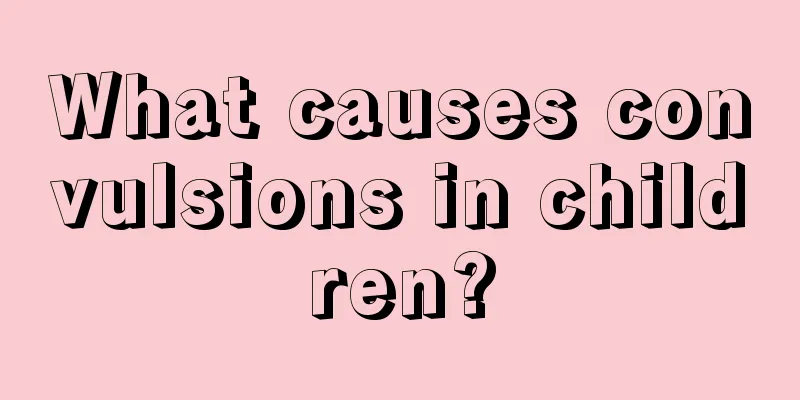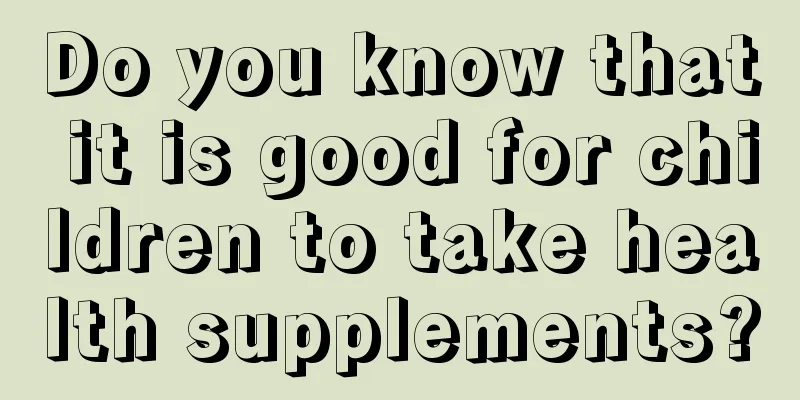Seven-month-old baby has a fever of 39 degrees
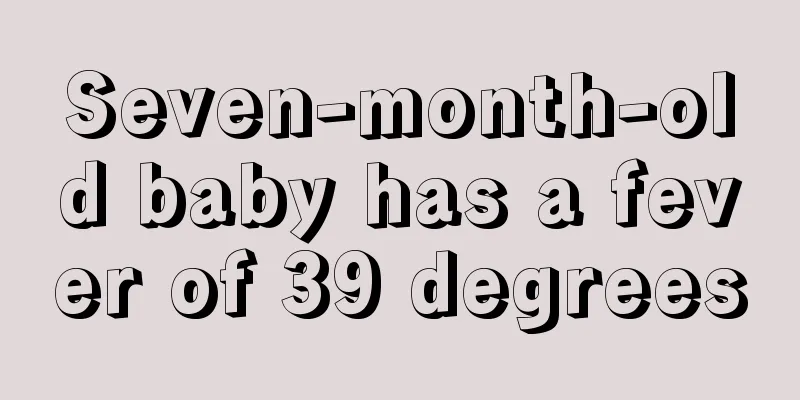
|
After birth, the baby depends on his parents for daily care. If he is not feeling well, he can only express it by crying. All things require careful observation by parents. For example, babies of seven or eight months old will not express if they are not feeling well. When parents find anything abnormal, they should test it immediately by touching the baby's back. If it is caused by a fever, take appropriate measures according to the temperature immediately. Methods/Steps There is a pattern when a child has a fever: if the child's hands and feet are cold and the face is pale, it means that the child's body temperature will rise; if the child's hands and feet become warm and sweat, it means that the body temperature will not rise any further. There are several ways parents can deal with their children's fever: 1. For infants under one and a half years old, the anterior fontanelle has not yet completely closed. Parents can cover the child's anterior fontanelle with the palm of their hand after the child falls asleep, and continue to cover it until the child's head sweats slightly. At this time, when looking at the baby again, you will find that the nose is unblocked, the breathing is stable, and the temperature has dropped. At this time, parents can wake up the baby and feed him more warm water or brown sugar water, and the baby will soon recover. My son had several colds and fevers before he was one year old, and I used this method to cure them. The shortest time only took 15 minutes, and the longest took me an hour and a half. My hands were numb, and then I saw sweat on my son's head. Therefore, when covering the baby's anterior fontanelle with the palm of your hand, parents must not be anxious. It is best for the child's father to do it, as men have high temperatures and babies are prone to sweating. 2. Most children's fever is caused by colds. When they have a fever, their hands and feet are cold, their tongue coating is white, their face is pale, and their urine is light in color. Parents can use ginger and brown sugar water to dispel the cold for their children, and the effect is good. If 2 to 3 pieces of green onion cut into one-inch long are added to the ginger and brown sugar water, the effect will be better. If the child is afraid of spicy food, you can add two slices of ginger, two pieces of green onion, and a few drops of vinegar to the porridge for the child. After cooking, remove the ginger and green onion and feed it to the child. It can dispel cold, induce sweating, and reduce fever. The effect is good, and children are willing to eat it. Parents can feed their children 2 to 3 times a day. Do not add onions after the child's fever subsides. Ginger can also be omitted when the tongue coating is no longer white. 3. If the child's hands and feet are not cold when he has a fever, but his face is red, his throat is swollen and sore, his tongue is yellow or red, his urine is yellow and has a strong odor, and his eyes are red, it means that the child has a lot of internal heat in his body and he should not drink ginger and brown sugar water. Parents should let their children drink plenty of warm boiled water. You can also add a small amount of salt to the water to make it light salt water for the child to drink, which can eliminate internal heat. Only if children drink plenty of water and urinate more often, allowing the internal heat in the body to be discharged with urine, will their body temperature drop and the symptoms of getting a fever improve. 4. If the child has a fever both during the day and at night, it means that there is internal heat or inflammation in the body. Parents can cut the bitter gourd into thin slices, take 10 slices, add water and boil for 5 to 10 minutes, then give it to the child to drink, 2 to 3 times a day. When the child no longer has a fever during the day, stop drinking it. At the same time, try to let your child drink more water, eat fresh fruits, and have a relatively light diet. He cannot eat fish or shrimp, and can only eat other meats and vegetables. 5. If the child's body temperature is normal during the day, but rises in the evening and subsides in the morning, it means that the child's fever is caused by severe cold and deficiency in the body. At this time, you should still give the child ginger, brown sugar and scallion water. It is best to soak the feet in mugwort water to dispel the cold. You can also let the child drink broth and light chicken soup. Guyuan paste can be taken twice a day, half a spoonful each time, to supplement the child with nutrition in time, and let the child drink more water. 6. For children over 2 years old, parents can help them massage. First rub the soles of the child's feet to draw the heat downwards. After the feet are warm, rub the calves, up and down. After the calves are warm, rub the child's hands, arms, back and ears. Finally, rub the Baihui point in the center of the top of the child's head. Parents should not use too much force when massaging their children. They should rub gently and not too fast. They should rub slowly and gently. They should not be in a hurry. While rubbing, they should let the children drink more warm water. If the child's fever does not go away, wipe the child's entire body with warm water, rub the child's skin with a towel until it turns red and warm, and let the child's body dissipate the heat on its own. If the child still has cold hands and feet, it means that he has caught a severe cold. Parents can give the child ginger, brown sugar and scallion water to drink several times in a row. After this treatment, the child's temperature will most likely cool down. Parents need to note that when drinking scallion, ginger and brown sugar water plus massage to treat fever, they should drink the scallion, ginger and brown sugar water first and then massage. What symptoms should children take to the hospital in time when they have a cold or fever? 1. High fever above 39.5℃. 2. The child is unable to drink water or has convulsions. 3. The child is in poor spirits, sleepy or difficult to wake up. 4. The child has a wheezing sound in the throat when breathing. 5. After a cold, the child's breathing speeds up (infants under 2 months old breathe ≥60 times per minute, children from 2 months to 1 year old breathe ≥50 times per minute, children from 1 to 4 years old breathe ≥40 times per minute), which may cause mild pneumonia. 6. The child's breathing speeds up and upper chest retraction occurs (referring to the depression of the lower chest wall when the child inhales. This is due to the poor elasticity of the lung tissue and the difficulty in inhaling. If only the soft tissue between the ribs or above the clavicle collapses when the child inhales, it is not chest retraction). This feature indicates that the child has obvious breathing difficulties and may have severe pneumonia. |
<<: What to do if your baby has rectal prolapse
>>: Is 37.2 degrees a fever for a baby?
Recommend
What eye drops are best for children?
Many children read books, watch TV, and play game...
What to do if your baby chokes on medicine
It is normal for babies to be unwilling to take m...
How much lead is considered excessive for children?
Children are very important to every family. Chil...
Is it a problem if the baby doesn't have a full stomach?
Before I had a baby, the term "holding bowel...
What to do if a girl has small breasts and what to pay attention to
Nowadays women all want to have a perfect figure ...
What are some tips for treating a baby’s severe cough?
Babies are very prone to coughing. For example, t...
What is the cause of the red pimple on the baby's chin?
If a baby has some small bumps on his chin, it is...
Can children drink pregnant women's milk powder?
During pregnancy, many pregnant women drink milk ...
What should I do if my baby always has eye mucus?
The baby always has eye mucus. Mostly it’s becaus...
What causes redness in baby's scrotum?
If you find that your baby's scrotum is red, ...
Treatment of sinusitis in children
The occurrence of sinusitis in children makes man...
Why is the baby's finger peeling?
Although many mothers are very careful and meticu...
Child's glans pain
Pain involves many factors and occurs in differen...
Treatment of an eight-month-old baby with a fever of 38 degrees
As parents, when our children have a fever, we ar...
What to do if your child has a cough and a stuffy nose
When children cough and have a blocked nose, pare...

